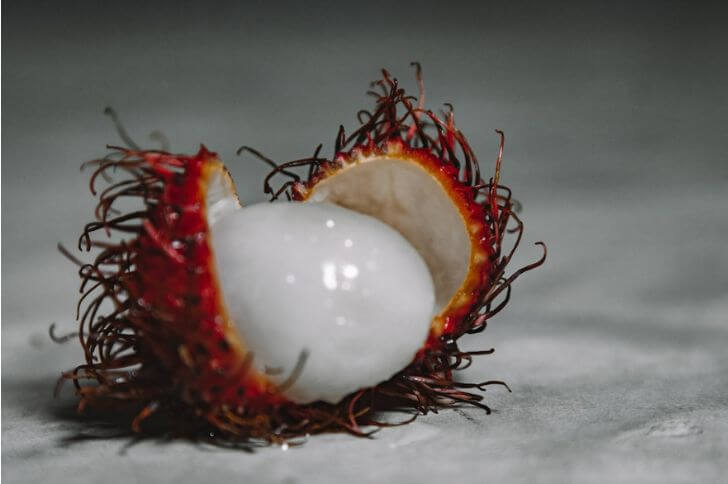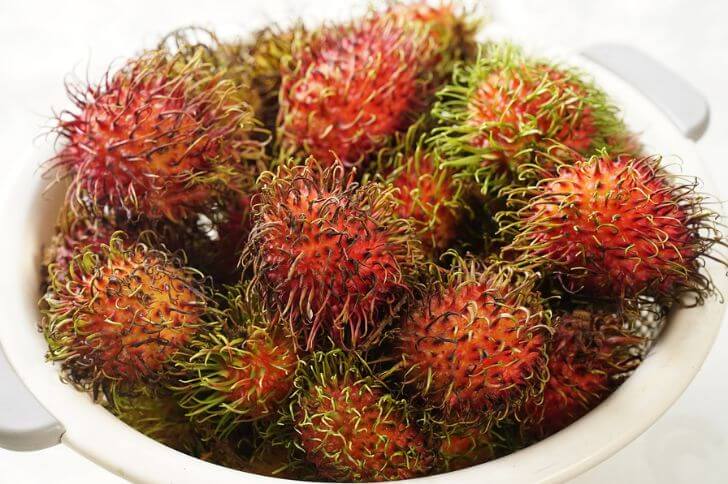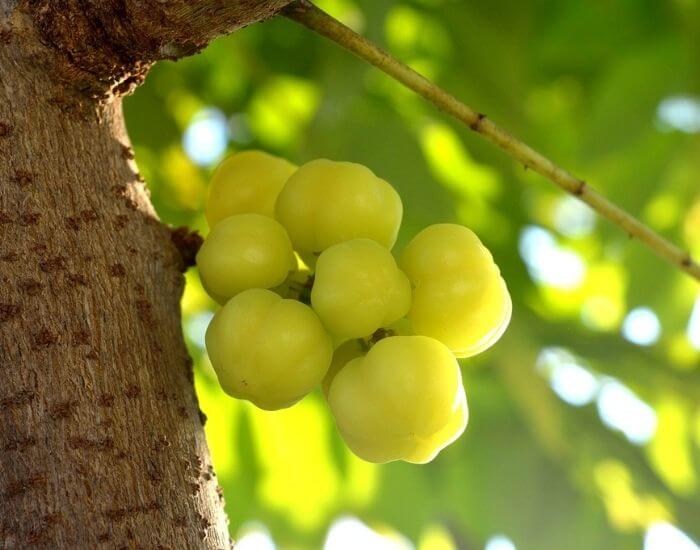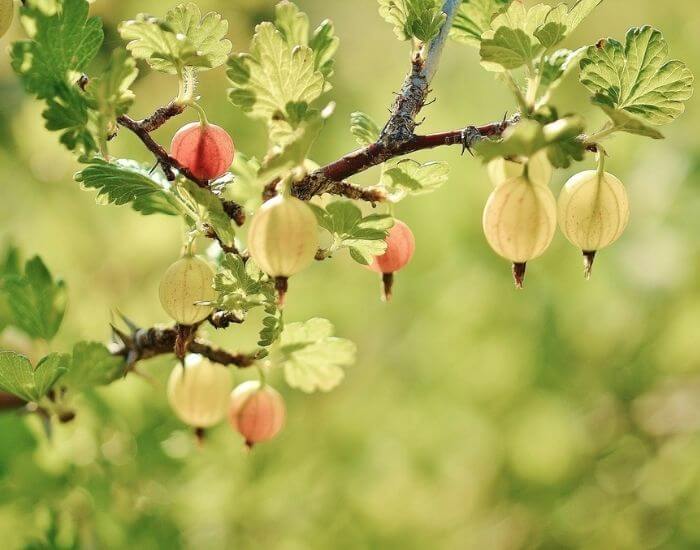Mamon Chino, also known as Rambutan, is a tropical fruit that originated in Southeast Asia. It belongs to the family of Sapindaceae and is related to other exotic fruits such as Lychee and Longan.
The fruit has gained popularity across the world for its unique taste and appearance. Its red, hairy exterior hides a juicy white flesh that surrounds a single seed.
What is mamon Chino fruit?
Mamon Chino is a small, round fruit that is native to China and other parts of Southeast Asia. Another common name is rambutan.
Its outer skin has a reddish-brown or yellow color with hair-like spines all over it, while the inside contains a white or translucent fruit that resembles lychee or grape. The fruit’s taste has been described as sweet yet slightly acidic.
Mamon Chino fruit color
The fruit’s outer skin varies depending on how ripe it is. When it’s unripe, the skin is greenish-red, but as it ages and gets riper, it tends to turn deep red to brown.
This indicates that the fruit has reached peak ripeness and is ready to be consumed.
How to tell if rambutan is ripe

The first way to determine if a rambutan is ripe is by looking at its color. Ripe fruits have bright red or yellowish-green skin with fewer spikes than unripe ones. Also, they are plump and feel heavy in your hand due to their juicy content.
Another indicator of ripeness in mamon chino is the texture of its skin. A ripe fruit will have smooth and flexible skin that easily gives when pressed gently with your fingers. On the other hand, unripe fruits have tough skin that doesn’t yield under pressure.
Lastly, you can use the smell test to check for ripeness. A mature and ready-to-eat fruit emits a sweet aroma that fills the air around it.
How to prepare rambutan
To prepare mamon chino fruit, you will need to start by washing the fruit thoroughly.
Once the fruit is clean, cut off the top and use a spoon to scoop out the flesh from inside. The flesh should be removed in small pieces and placed into a bowl. Once all of the flesh has been removed from the skin, add sugar and lime juice to taste.
Finally, mix everything together until all of the ingredients are well combined. This mixture can be served on its own or used as an ingredient in various desserts like ice cream or sorbet.
If you’re feeling adventurous, try adding chopped mint leaves or coconut flakes for an extra burst of flavor!
Where does mamon chino fruit come from?
Its tree thrives in hot and humid climates with plenty of rainfall. They require well-draining soil with a pH range between 5.0-6.5 for optimal growth. The trees can grow up to 80 feet tall and have pinnate leaves that are about 8 inches long.
The fruit’s cultivation spread throughout the region, including Indonesia, Thailand, Vietnam, and the Philippines.
It was introduced to other parts of the world during colonial times and is now grown in many tropical countries such as India, Sri Lanka, Malaysia, Australia, and even Hawaii. In fact, Hawaii is one of the few places where it’s possible to buy fresh mamon chino fruit outside of its native range.
Nutritional facts
1 Cup mamon chino:
- 125 Calories
- 31 g carbs
- 0.3 g fat
When is this fruit in season
Mamon Chino fruit typically ripens during the summer months, from July to October.
The peak season for Mamon Chino fruit varies depending on the region where it is grown. In some areas, such as Thailand and Malaysia, the season peaks in May. However, in other regions like the Philippines, this red fruit is available later, from August to October.
While this fruit can be found year-round in some markets thanks to imports from other countries or greenhouse cultivation techniques, it is best enjoyed when it’s fresh and in-season. During peak season, you can expect to find this delicious treat at Asian markets.
What does rambutan fruit go in?
In the Philippines, it is commonly eaten fresh or canned as a dessert or snack. It has a spiky red exterior that can be peeled to reveal a white flesh with a single seed.
In traditional Filipino cuisine, mamon chino fruit is used as an ingredient in various recipes including salads, desserts and drinks. For example, it can be added to halo-halo – shaved ice mixed with different fruits and sweet beans – for added texture and flavor.
It can also be used to make jam or jelly by boiling the fruit with sugar until it thickens.
Mamon Chino’s juicy texture makes it perfect for smoothies and shakes too. Simply blend the peeled fruit with some milk or yogurt and add some honey for sweetness if needed!
Taste

What does mamon chino fruit taste like? The fruit is about the size of a golf ball. Its taste can be described as mildly sweet with a hint of tartness.
Some people compare it to lychee or grapefruit, while others say it tastes like a combination of pineapple and mango.
The texture is soft and chewy, similar to that of a grape, but with less juice.
Ways to eat
There are several ways to eat Mamon Chino fruit. One option is to simply cut the fruit in half and scoop out the flesh with a spoon. This method allows you to enjoy the natural sweetness of the fruit without any added ingredients.
Also it can be used in desserts such as pies, tarts, or cakes. The sweet and tangy flavor of this fruit pairs well with creamy fillings and crusts. Try incorporating slices or diced chunks of mamon chino into your next baked good for a unique twist on traditional desserts.
Ways to drink rambutan
There are various ways to drink rambutan fruit, and one of the most popular methods is to blend it with other fruits or vegetables. For instance, you can make a delicious smoothie by blending it with banana, spinach, and almond milk.
Another way to enjoy it is by making a refreshing juice out of it. To do this, simply cut the fruit in half and extract the juice using a juicer or blender. You may also add some honey or sugar to enhance its flavor if desired.
Alternatively, you can infuse water with its slices for an added burst of flavor while staying hydrated throughout the day.
Lastly, you may also use rambutan as an ingredient for cocktails or mocktails. The sweetness of this fruit blends well with different types of alcohol such as vodka or gin which makes it perfect for summer parties or gatherings.
Rambutan cocktail
Ingredients:
-Rambutan fruit
– Rum
– Simple syrup
– Lime juice
– Ice cubes
Instructions:
1. Peel and pit the rambutan fruit.
2. Muddle the fruit in a cocktail shaker.
3. Add 2 oz of rum, 1 oz of simple syrup, and 1 oz of lime juice to the shaker.
4. Fill the shaker with ice and shake vigorously for 15 seconds.
5. Strain the cocktail into a glass filled with ice cubes.
6. Garnish with a slice of lime or a rambutan fruit on top.
7. Enjoy your refreshing rambutan cocktail!
How to store mamon chinos
When it comes to storing rambutans, there are a few things you need to keep in mind.
Firstly, always pick almost-ripe fruits. Secondly, store the fruit at room temperature for up to two days until it ripens fully. Once ripe, transfer to the fridge where it can stay fresh for up to five days.
If you have cut fruit that you wish to store, keep it in an airtight container or plastic wrap before placing it inside the fridge. Alternatively, you can also freeze peeled and sliced fruit for later use in smoothies or desserts.
Remember not to over-ripen or under-ripen your mamon chino as both might result in spoilage or poor texture respectively.
Where can you get mamon Chinos
If you’re looking for mamon chino, you can find it at most Asian grocery stores. In addition to physical stores, some online retailers specialize in selling exotic fruits like longans and rambutans.
It’s important to note that the availability of this fruit may vary depending on your location and the season.
Another option for getting this fruit is growing your own tree. While this option requires more effort and patience, it can be rewarding to have fresh fruits right from your backyard!
You’ll need warm temperatures and plenty of sunlight to grow these trees successfully.
Is mamon chino fruit same as rambutan?
Yes, another name for mamon chino is rambutan. This fruit is called by either name depending on the region it’s growing.
Is rambutan lychee
Rambutan and lychee are two different fruits, although they may look similar in appearance. Rambutan has a spiky red exterior that can be peeled away to reveal a white, translucent fruit with a large seed in the center.
Lychee, on the other hand, has a rough pink or reddish exterior that can be easily removed to reveal a white fruit with a small seed in the center.
While rambutan and lychee are not the same fruit, they do have some similarities. Both fruits belong to the Sapindaceae family and are native to Southeast Asia.
They also have a sweet flavor profile and are commonly used in desserts or eaten fresh as snacks.
However, mamon chino has a slightly tangier taste than lychee and is often used in juices or smoothies rather than eaten whole like its counterparts.
Rambutan vs longan
Rambutan’s exterior is covered in a spiky red shell, while longan has a brown rough skin that is easily peeled off. Both fruits have white, juicy flesh with a sweet flavor and a similar texture.
However, there are some differences between these two fruits. Rambutan is slightly larger than longan and has a more distinct flavor with hints of sourness. On the other hand, longan is known for its delicate sweetness.
Whether you prefer rambutan’s tangy sweetness or the subtle elegance of longans’ taste depends on individual preference but one thing is certain – they’re both delicious!
Source:
Hi There,
My name is Jenny. I’m the Chief Editor at Try Green Recipes and besides making yummy and healthy foods for my kids, grandkids, and friends. I’m new to the blogging world but I believe what I have to share is unique and will bring joy to your home. If you are adventurous and want try something tasty, let’s get started.

